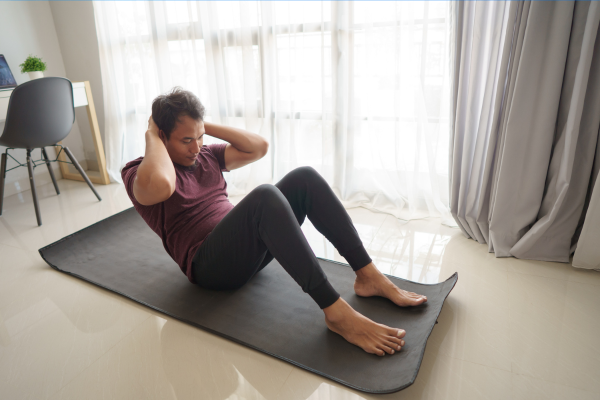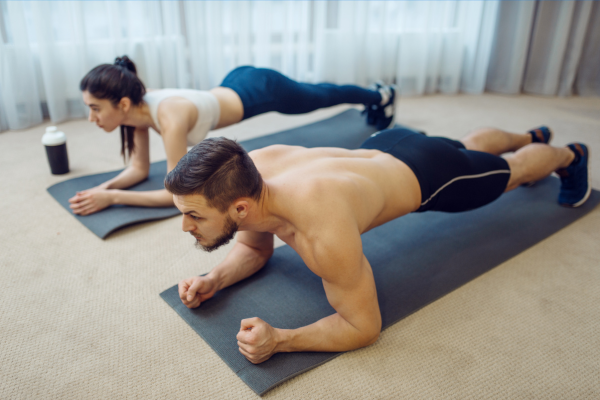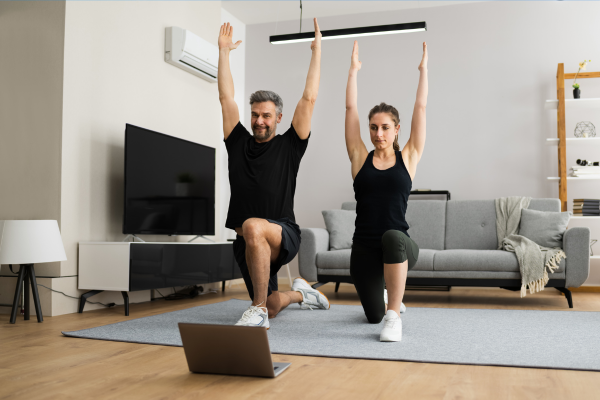Unlocking the Power of Home Workouts: The Crucial Importance for Physical and Mental Well-Being – By Nadeeka – eLanka

In the hustle and bustle of modern life, finding time for a fitness routine can be challenging. This is where the significance of home workouts emerges as a game-changer. Beyond the convenience of avoiding crowded gyms and fitting into busy schedules, home workouts offer a plethora of benefits that make them a cornerstone of physical and mental well-being.
1. Accessibility and Convenience: One of the primary reasons home workouts are essential lies in their accessibility and unmatched convenience. No commute time, no membership fees, and no rigid schedules. With a simple setup, individuals can embark on their fitness journey in the comfort of their homes, eliminating the common barriers that often deter people from regular exercise.

2. Consistency Breeds Success: Consistency is the key to any successful fitness regimen, and home workouts make it easier to establish and maintain a consistent routine. With no external factors disrupting the schedule, individuals are more likely to stick to their workout plans, leading to long-term health benefits.
3. Personalized Fitness Journey: Home workouts provide the freedom to tailor exercises to individual preferences and fitness levels. Whether it’s a high-intensity interval training (HIIT) session, yoga, or strength training, individuals have the autonomy to craft a workout routine that aligns with their goals and accommodates any physical limitations.

4. Mental Health Boost: Exercise is not only about physical well-being but also a powerful tool for maintaining mental health. Home workouts, performed in a familiar and comfortable environment, contribute to reduced stress, anxiety, and depression. The endorphin release during exercise acts as a natural mood enhancer, fostering a positive outlook on life.
5. Time-Efficiency for Modern Lifestyles: The fast-paced nature of contemporary life often leaves little room for extended gym sessions. Home workouts provide a solution, as they can be efficiently integrated into busy schedules. Quick, effective routines allow individuals to reap the benefits of physical activity without sacrificing precious time.
6. Privacy and Comfort: For many, the idea of exercising in a public space can be intimidating. Home workouts offer a private, judgment-free zone where individuals can comfortably explore different exercises, experiment with new routines, and build confidence without the fear of scrutiny.
7. Family and Community Integration: Home workouts provide an opportunity for family or housemates to join in, fostering a sense of community. Shared fitness goals and routines can strengthen relationships, creating a supportive environment that encourages everyone to prioritize health and well-being.
8. Cost-Effective Fitness: Investing in a home workout setup is a cost-effective alternative to gym memberships and fitness classes. With minimal equipment or even just bodyweight exercises, individuals can achieve significant fitness results without breaking the bank.
9. Adaptability to Changing Circumstances: The flexibility of home workouts shines in their adaptability to changing circumstances. Whether it’s inclement weather, a busy workday, or unexpected events, individuals can seamlessly modify their workout routine to suit the situation, ensuring that exercise remains a constant in their lives.
10. Long-Term Sustainable Habits: Establishing home workouts as a consistent part of one’s routine cultivates sustainable habits that contribute to long-term health and well-being. Unlike fad diets or extreme fitness trends, home workouts provide a realistic and enduring approach to maintaining a healthy lifestyle.
Here’s a sample home workout routine that combines cardio, strength training, and flexibility exercises. Remember to warm up before starting the routine and cool down afterward. Adjust the intensity and repetitions based on your fitness level.
Warm-Up: Start with 5-10 minutes of light cardio, such as jogging in place, jumping jacks, or high knees, to increase your heart rate and warm up your muscles.
Home Workout Routine:
- Bodyweight Squats:
- Stand with feet shoulder-width apart.
- Lower your body by bending your knees, keeping your back straight.
- Squat down as if you’re sitting in a chair.
- Push through your heels to return to the starting position.
- Repeat for 3 sets of 15 reps.
- Push-Ups:
- Assume a plank position with hands placed slightly wider than shoulder-width apart.
- Lower your body by bending your elbows.
- Push back up to the starting position.
- Modify by doing knee push-ups if needed.
- Repeat for 3 sets of 10-12 reps.
- Lunges:
- Stand with feet together.
- Take a step forward with your right foot, lowering your body until both knees are bent at a 90-degree angle.
- Push back up to the starting position.
- Repeat with the left foot.
- Perform 3 sets of 12 lunges on each leg.
- Plank:
- Get into a forearm plank position, with elbows directly beneath your shoulders.
- Keep your body in a straight line from head to heels.
- Hold the plank for 30-60 seconds.
- Rest and repeat for 3 sets.
- Mountain Climbers:
- Start in a plank position.
- Bring your right knee towards your chest, then switch with the left knee.
- Keep alternating legs in a running motion.
- Perform for 1 minute, rest, and repeat for 3 sets.
- Bodyweight Rows (using a sturdy table or low bar):
- Lie underneath the table/bar and grab it with an overhand grip.
- Pull your chest towards the table/bar.
- Lower yourself back down.
- Repeat for 3 sets of 12-15 reps.
Cool Down: Finish with 5-10 minutes of stretching, focusing on major muscle groups, including hamstrings, quadriceps, chest, and shoulders. Include static stretches and deep breathing to help your body cool down and improve flexibility.
Adjust the intensity and repetitions based on your fitness level, and listen to your body. If you’re new to exercise or have any health concerns, it’s always a good idea to consult with a healthcare professional or fitness expert before starting a new workout routine.







